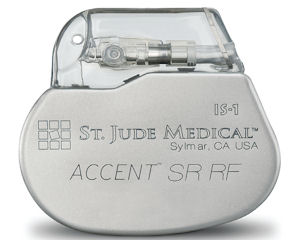A corporate restructuring at St. Jude Medical Inc. will result in layoffs of 100 employees from the company’s Sylmar facility, which makes medical devices for heart patients. Fifty-seven employees were laid off in August and an additional 42 will be cut in October, the company said. The Sylmar location will maintain an employee base of more than 1,700 workers following those cuts. St. Paul-based St. Jude’s reorganization consolidates four operating units into two – the implantable electronic systems division, which will include the Sylmar location, and the cardiovascular and ablation technologies division. The reorganization is being done to accelerate growth in the company, said Chairman, President and CEO Daniel J. Starks. “We are focused on reducing costs, leveraging economies of scale, maintaining the highest level of quality, and funding our entire portfolio of new growth drivers,” Starks said in a prepared statement. Analysts said there are other reasons why St. Jude and other medical device manufacturers need to cut costs, among them a weak global market for their products and a 2.3 percent tax on the sales generated from the devices to be collected in the U.S. starting next year. “Another big issue we are seeing is consolidation in health care providers that makes it tougher and tougher to negotiate (vendor) contracts with hospitals as they are under financial pressure,” said Debbie Wang, a senior analyst with Morningstar Inc. in Chicago. The 57 employees cut in August were part of the third shift and included assembler, inspector, team coordinator, and engineering positions. Twenty-five employees who had been slated for lay off found new positions within the company, according to spokesperson Amy Jo Meyer. The 42 positions to be cut in October are part of an overall 300 layoffs that will help bring a savings of $50 million to $60 million starting in 2013. The Valley plant produces implantable cardioverter defibrillator (ICD) and pacemaker products. In the second quarter, sales of those devices contributed $746 million, a decrease of 6 percent from the same period in 2011. For the second quarter ending June 30, St. Jude Medical had net income of $244 million, or $0.78 per diluted share, on revenue of $1.4 billion. For the same period in the prior year, the company had net income of $241 million, or $0.72 per diluted share, on revenue of $1.4 billion. St. Jude had a 5 percent growth in 2011 and is forecast to have 2 percent growth in sales in 2012, according to Raj Denhoy, an analyst who follows the medical device industry for Jefferies & Co. Inc. St. Jude’s restructuring comes at a time when the medical device market faces challenges on multiple fronts: patients putting off medical procedures due to the economy, increased scrutiny by the U.S. Food and Drug Administration, and the 2.3 percent tax that is part of health care reform and expected to generate $20 billion. None of these challenges are going to abate any time soon, Denhoy said. At the same time St. Jude made its announcement, Boston Scientific Corp., which also makes ICDs, was preparing to make its own staffing reductions as the result of manufacturing adjustments. Boston Scientific has a facility in Valencia that makes neuromodulation products. “These companies are restructuring their operations and right-sizing themselves for the challenges ahead,” Denhoy said. In November 2011, St. Jude recalled its Riata ICD due to insulation failure on the leads that connect the device to the heart to monitor heart rhythms. The FDA issued a safety communication on the leads in August, stating there were 79,000 Riata leads remaining implanted in patients in the U.S. A research report by William Blair & Co. concluded the cardiac rhythm management market will remain in a decline into early 2013 and will bottom out halfway through the year. St. Jude will see some improvement in revenue growth due to replacement of its devices in patients, the report said. “We see share gains contributing to low- to mid-single-digit revenue growth for the company’s (cardiac rhythm management) business in the back half of 2013,” the report stated. Wang, of Morningstar, anticipates medical device companies constantly adjusting and monitoring their costs and trimming expenses at the first sign investments are not panning out. When it comes to manufacturing, St. Jude saw what was coming several years ago and built manufacturing plants in low-cost areas such as Costa Rica and Malaysia, Wang said. The area least likely to be reduced is in research and development. “Those are the investment they will need to see growth and they will do their best to protect that budget,” Wang said.
